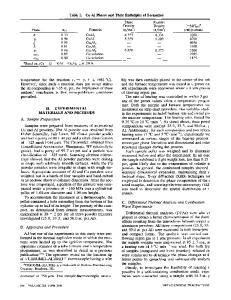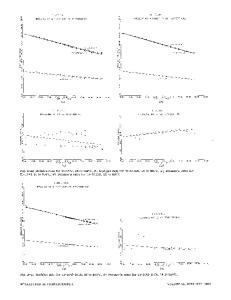Field-activated combustion synthesis of titanium aluminides
- PDF / 303,872 Bytes
- 8 Pages / 612 x 792 pts (letter) Page_size
- 100 Downloads / 360 Views
I. INTRODUCTION
THE potential use of titanium aluminides in structural and aeronautical applications has generated considerable interest in these materials in the past decade. These intermetallics possess a combination of physical and mechanical properties which make them attractive for these and other applications. The desired properties include low density, high specific strength, excellent creep resistance, and hightemperature oxidation and corrosion resistance.[1] However, this class of materials is characterized by room-temperature brittleness, and some of the current research is aimed at improving their ductility through various approaches, including the use of new methods of production, or through alloying. Several methods have been utilized in the synthesis of Ti-Al intermetallic compounds. These include conventional melting and casting processes and powder metallurgical techniques.[1] The latter include mechanical alloying,[2] plasma-rotating electrode processes, and inert gas atomization (which all have been recently proposed as methods of preparing titanium aluminides in powder form). In all of these approaches, a subsequent step is required to obtain products with the desired density and shape. An alternative powder technique for the preparation of intermetallics is combustion synthesis.[3] Through this method, intermetallics can be synthesized by one of two modes: self-propagating or simultaneous combustion synthesis. The first requires a large exothermic enthalpy of formation for the desired intermetallic compound and, as such, ´ , Assistant Professor, on leave from the Dipartimento di IngegneR. ORRU ria Chimica e Materiali, University of Cagliari, 09123 Cagliari, Italy, is with the Department of Chemical Engineering and Materials Science, University of California, Davis, CA 95616. G. CAO, Associate Professor, is with the Dipartimento di Ingegneria Chimica e Materiali, University of Cagliari. Z.A. MUNIR, Professor and Associate Dean, is with the Department of Chemical Engineering and Materials Science, University of California, Davis, CA 95616. Manuscript submitted December 5, 1997. METALLURGICAL AND MATERIALS TRANSACTIONS A
is not typically suitable for most intermetallic compounds, including titanium aluminides.[3] The second mode involves the gradual (furnace) heating of the reactant powder mixtures up to a temperature where the reaction takes place simultaneously over the entire sample. An alternative modification combining these two approaches consists of preheating the reactants to a temperature at which a self-propagating reaction wave can be initiated and sustained. The preheating overcomes the intrinsic problem by increasing the adiabatic combustion temperature. An empirical criterion for determining the feasibility of self-propagating high-temperature synthesis (SHS) is an adiabatic temperature (Tad ) exceeding 1800 K. As is the case for the majority of intermetallic systems, titanium aluminides are characterized by Tad values ,1800 K (for example, Tad is 1493 and 1517 K for TiAl and TiAl3,
Data Loading...











